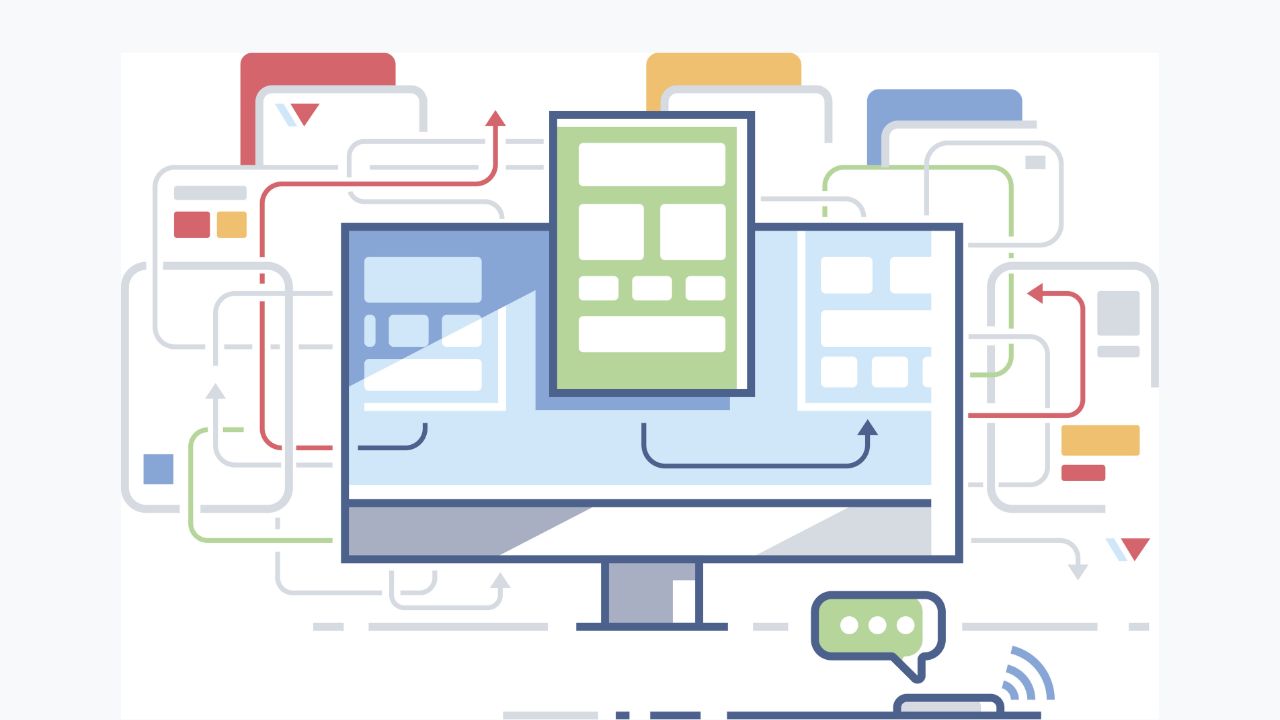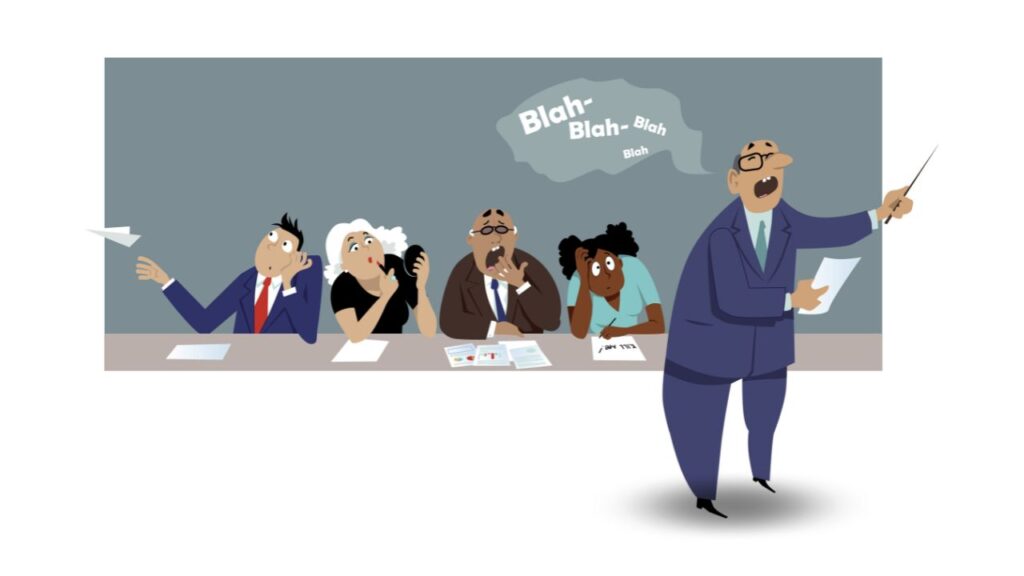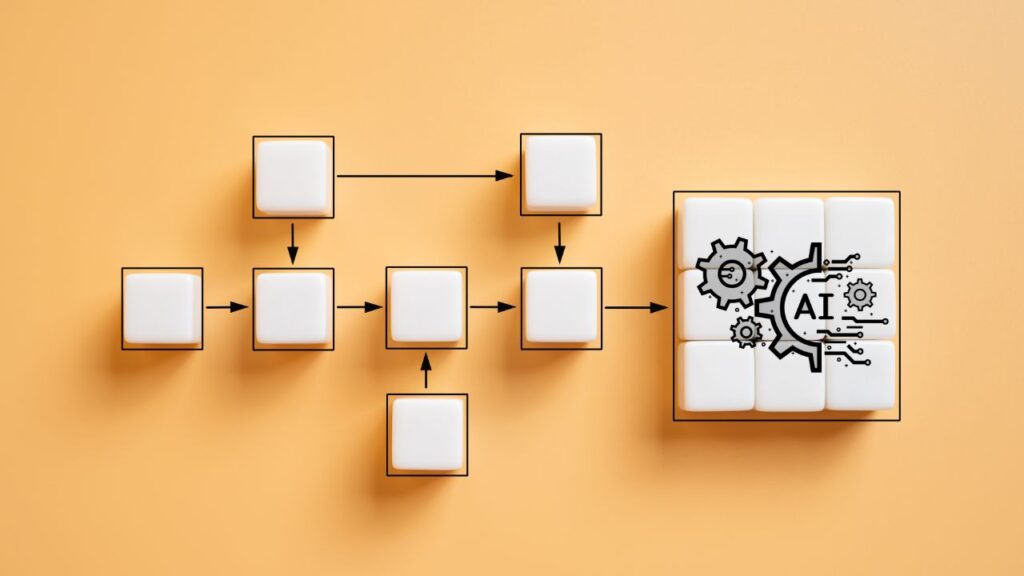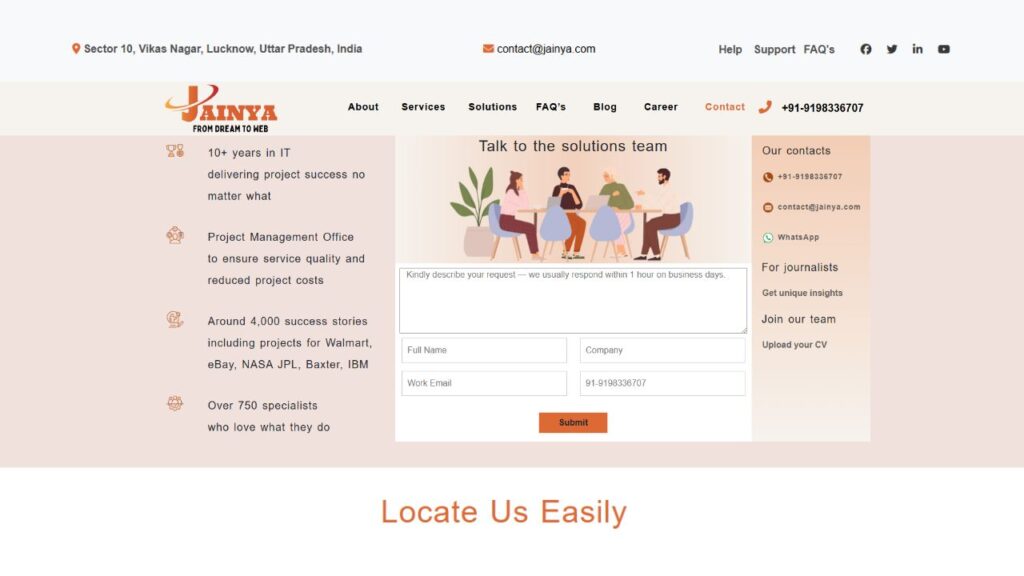The success or failure of a website depends on how easy it is to use and what it can do, not on how it looks. Because the person who visits the page is the only one who clicks the mouse and makes the decisions, user-centric design has become the usual way to make best website designers that work well and make money. Users might as well not have a tool if they can’t use it.

There are already a lot of articles that talk about the specifics of how to design something, like where the search box should go. Instead, we’re going to focus on the main principles, heuristics, and approaches for effective web design. These can assist you in making superior design judgments and facilitate comprehension of your observations.
Principles of good website design and useful tips for web designers #
Before we can use the principles correctly, we need to know how people use websites, how they think, and what the general patterns of their behavior are.
What do users think? #
In a lot of ways, people’s habits on the Web are the same as their habits in a store. People look at each new page quickly, read a few words, and then click on the first link that interests them or looks a little like what they’re looking for. They don’t even look at a lot of the page.
Most users look for something interesting (or useful) that they can click on. Once they find some good options, they click on them. Users click the “Back” button and continue their search if the new page doesn’t meet their needs.
- People like quality and trustworthiness. People will put up with ads and bad design on a page as long as it has good information. That’s why best website builders with good information but not great design keep getting a lot of visitors over time. The content is more important than the form that holds it up.
- People look instead of reading. As people look at a web page, they try to find fixed places, or anchors, that will help them understand what the page is about.
- People look instead of reading. Take note of how the “hot” areas cut off words in the middle. Like always, this is how the scanning process works.
- People who use the Internet are anxious and want things right away. A very simple rule says that if a best website maker doesn’t meet users’ needs, the creator didn’t do his job right and the company loses money. This means that users are more likely to leave a website and look for something else if it requires a lot of thought and is hard to use. *[JN/DWU]
- People don’t always make the best decisions. Customers don’t look for the fastest way to get the information they need. They also don’t scan online pages in a straight line, going from one part of the site to another. Users instead choose the first choice that makes sense to them. When they find a link that looks like it might lead to the goal, they will almost certainly click on it right away. This process takes a long time and is hard to do well. It’s better to settle for less.
- Reading in order doesn’t work on the Web. The scan path of a certain page is shown in the right photo at the bottom of the picture.
- People go with their gut. Most of the time, users figure things out on their own instead of reading what the creator has written. Steve Krug says that people don’t care, which is the main reason for that. ” “We follow to effective methods when discovered.” Why is it significant to us how processes function? We merely require the ability to utilize them. If people are going to treat you like you’re making signs, then make great ones.
- People want to be in charge. Users want to be able to customize their browser and trust that the site will always show the same data in the same way. People don’t want new windows to appear out of nowhere, and they want to be able to use the “Back” button to go back to the site they were on before. For these reasons, it’s best not to open links in new browser windows.
1. Don’t make visitor think #
Krug’s first rule of usability says that a web page should be clear and easy to understand. When you’re making a website, it’s your job to get rid of the question marks. Users need to make choices on their own, thinking about the pros, cons, and other options.
More question marks mean that the navigation and site aren’t easy to understand. This makes it harder for users to figure out how the system works and how to get from A to B. Users can find their way to their goal with the help of a clear framework, some visual cues, and links that are easy to spot.
Let’s look at a case study. It says that it is “beyond channels, beyond products, and beyond distribution.” What does it mean? Because people usually look around best website creators in a “F” shape, these three sentences will be the first things people see when the page loads.
The style is simple and easy to understand, but the user has to look for the answer to figure out what the page is about. This is what an extra question mark looks like. The designer’s job is to keep the number of question marks close to 0. On the right is the picture that shows how to do it. It would be easier to use if you just switched the two blocks.
Expression Engine has the same layout as Beyondis, but it doesn’t use question marks when they aren’t needed. Users are also given the chance to try the service and download the free version, which makes the phrase useful.
By lowering the brain load, you make it easier for people to understand what the system is all about. After that, you can talk about why the method is useful and how people can use it to their advantage. If your website is hard to use, no one will go there.
2. Do not waste users’ patience #
When you offer a service or tool to your guests as part of a project, try to keep their needs as simple as possible. The easier it is for people to test a service, the more likely it is that a chance visitor will do so. People who are just visiting for the first time don’t want to fill out long web forms to make an account that they may never use. Users should be able to look around your site and learn about your services without having to give you private information. Users shouldn’t have to enter an email address in order to test the tool.
Ankit, a developer on the Jainya’s team, says that users would likely be happy to give an email address if they were asked to do so after seeing how the tool worked and knowing what they would get in return.
As an example of an easy-to-use service that doesn’t ask for much from visitors and is comfortable, Jainya is a great choice. That’s how you want people to feel when they visit your website.
It looks like Mite needs more. But signing up can be done in less than 30 seconds, and the user doesn’t even have to scroll the page because the form is laid out horizontally.
Ideally, get rid of all the hurdles. For example, don’t ask people to sign up or subscribe first. Just requiring users to sign up makes it harder for them to navigate, which cuts down on new traffic.
3. Manage To Get People To Pay Attention #

Best website developers have both static and patterns and motions, so different parts of the user interface get more attention than others. It’s clear that pictures are more interesting than words, just like bolded lines are more interesting than regular text.
The human eye is not very linear, and web users can see edges, patterns, and movements right away. This is why video ads are so annoying and take away from the experience, but from a business point of view, they do a great job of getting people’s attention.
The concept of focus is used perfectly in Humanized. The only thing that users can see directly is the word “free,” which works as both an attractive and informative element. Users can figure out how to learn more about the “free” product by following a few subtle hints.
Using a moderate amount of visual features to draw people’s attention to certain parts of your site can help them get from point A to point B without having to think about how to do it. There should be as few question marks as a better sense of orientation. This will help them find their way around and build trust in the company the site represents. That is, the goal of usefulness is to make things easier for people to use, so the less work that needs to be done behind the scenes, the better.
4. Try to get your features Exposure

Modern web designs are often blamed for using visually appealing “1-2-3-done” steps, big buttons with effects, and other things to guide users. But these parts aren’t really a bad thing from a planning point of view. Instead, these kinds of rules work really well because they make it easy for people to find their way around the site’s material.
Dibusoft’s site is both visually appealing and easy to use. At first glance, you can see that the site has 9 key navigation options. The color scheme could be too light, though.
A basic rule of good user interface design is to make it easy for the user to see what functions are offered. The way this is done doesn’t really matter. What’s important is that people can understand the material and are comfortable with how they use the system.
5. Use writing skills that work #
Because the Web isn’t the same as print, the writing style needs to be changed to fit the tastes and viewing habits of users. Promotional work is not going to be read. Keywords that are in bold or italics and long blocks of text will be missed. Language that is too strong will not be taken into account.
Talk about work and business. Don’t use cute or clever names, names that are meant to be marketing-driven, company-specific names, or scientific names that you don’t know. That is, “sign up” is better than “start now!” when you’re talking about a service and want people to make an account.”, which is once more better than “check out our services.”
6. Prioritize Essential Features for User Focus #

You should use short, clear sentences that get right to the point,
- Use a style that is easy to scan (box up the information, use multiple levels of headings, add pictures and bulleted lists to break up the flow of long blocks of text);
- Use clear and honest language (an ad doesn’t have to sound like an ad); give people a good reason to use your service or stay on your best website making sites.
6. Try to keep things simple #
Site design should be based on the “keep it simple” (KIS) concept. Users usually aren’t on a site just to look at how it looks; they’re there to find information, no matter how it looks. Try to keep things simple instead of complicated.
From the visitors’ point of view, the best site design is one that is all text, with no ads or other content blocks that don’t match the question or content that the visitors were looking for. This is one reason why it’s important for online pages to have print versions that are easy to use.
Finch makes the site’s information easy to understand and gives users a choice of what to do without giving them too much information.
7. Do not worry about the empty space #
In fact, it’s hard to say enough about how important white space is. It not only makes it easier for visitors to understand what’s on the screen, but it also makes their reduce the cognitive load. The first thing a new visitor does when they come to a best website design layout is scan the page and break up the content area into bits that are easy to read.
It is harder to read, scan, examine, and work with structures that are complicated. A visible line or some empty space between two design segments is generally not the best choice. When in doubt, use the empty space. According to Simon’s Law, Hierarchical structures reduce complexity. The better you can give users a sense of visual hierarchy, the easier it will be for them to understand your information.
There should be white space. Action Games Now makes good use of white space as a main design feature. The result is an easy-to-scan layout that puts the information where it belongs: front and center.
8. Utilize Clear and Descriptive Headings for Easy Navigation #

According to Aaron Marcus’s writings on how to communicate visually, there are three main rules for using what people see on a screen, which he calls “visible language.”
- Organize: Give the person a clear and consistent way to think about things. Organizational ideas like consistency, screen layout, connections, and ease of use are all very important. All of the parts should follow the same rules and standards.
- Save money: use as few visible and auditory cues as possible to get more done. You should think about four main things: how simple, clear, unique, and emphasized something is. Only the most important parts of conversation are included in simplicity.
- Clarity: All of the parts should be made so that it’s clear what they mean. Distinctiveness: the necessary parts should be able to be told apart by their important properties. It’s important that the most important parts are easy to see.
- Communicate: make sure the show fits the user’s skills. It’s important for the user interface to keep the right mix between readability, legibility, typography, symbolism, multiple views, color or texture, and symbolism. Use the most. 3 fonts in sizes no bigger than 3 points, which is up to 18 words or 50 to 80 characters per line of text.
9. The conventions are on our side #
A website that uses standard layout for its parts doesn’t have to be dull. As it turns out, conventions are very useful because they make it easier to learn how things work. For example, all best portfolio website builders showing RSS files in different ways would make them very hard to use. That’s not that different from how we plan our everyday lives, like how we use folders to store information or where we put our shopping items.
By following conventions, you can earn users’ trust, show that you can be relied on, and prove your trustworthiness. Follow users’ expectations – know what they want from a site’s navigation, text layout, search placement, and so on.
If you know that most of your web users don’t know Japanese, you could translate the page into Japanese and give your usability testers the job of finding something on the page that is written in a different language. Users will be able to reach a vague goal if standards are followed correctly, even if they don’t understand a word of it.
Steve Krug says that you should only come up with new ideas when you’re sure you have a better one. When you don’t, he says, you should simply follow the rules.
10. Test Early and Test Often #

It is suggested that this so-called TETO principle be used in all good web design projects, since usability tests can reveal important problems and issues with a style.
It’s important to test at the right time and not too late or too little. In the second case, it’s important to know that most design decisions are local. This means that you can’t say for sure which layout is better because you have to look at it from a very specific angle, taking into account things like needs, funds, stakeholders, and so on.
Here are some important things to remember:
- Steve Krug says that testing one person is better than testing none at all, and testing one early on in the project is better than testing 50 near the end. Boehm’s first rule says that mistakes happen most often during the requirements and design phases, and they cost more to fix the later they are found.
- Testing is a process that is repeated. In other words, you plan something, check it out, make changes, and then test it again. There may be problems that weren’t found in the first round because users were pretty much stopped by other issues.
- The results of usage tests are always useful. Either you’ll be shown the problems you have or the fact that you don’t have any big design flaws, which is helpful for your project either way.
- Weinberg’s rule says that a developer shouldn’t test their own code. This is also true for artists. When you’ve worked on a site for a few weeks, you can’t look at it with fresh eyes anymore. You know exactly how it works because you know how it was built. Independent testers and site viewers wouldn’t have that kind of knowledge.
Jainya Tele Enterprises Private Limited: Your Go-To for Website Design #

At Jainya Tele Enterprises Private Limited, we pride ourselves on being one of the best website design companies for small businesses. Our team of skilled professionals is dedicated to delivering exceptional results tailored to your unique needs. If you’re searching for the best website designer near me, look no further! We specialize in creating visually appealing and functional websites that resonate with your target audience.
For those looking to showcase their work, we offer insights into the best website builders for portfolios, ensuring that your creative projects shine. Our expertise extends to being recognized as one of the best website developers for small businesses, providing comprehensive solutions that drive engagement and conversions.
When you need local expertise, our services rank among the best web designers near me, combining local knowledge with industry best practices. We also understand the importance of aesthetics, which is why we can guide you to the best graphic design portfolio websites that inspire and elevate your brand’s visual identity.
In the digital landscape, having a strong online presence is crucial. That’s why we focus on creating best digital agency websites that not only look great but also perform exceptionally well. For those on a budget, we offer best cheap websites without compromising on quality, ensuring that every small business can afford a professional online presence.
Finally, our best website design services are tailored to meet the specific needs of your business, helping you stand out in a competitive market. Partner with Jainya Tele Enterprises Private Limited today and take the first step towards transforming your online presence!
Leave a Comment